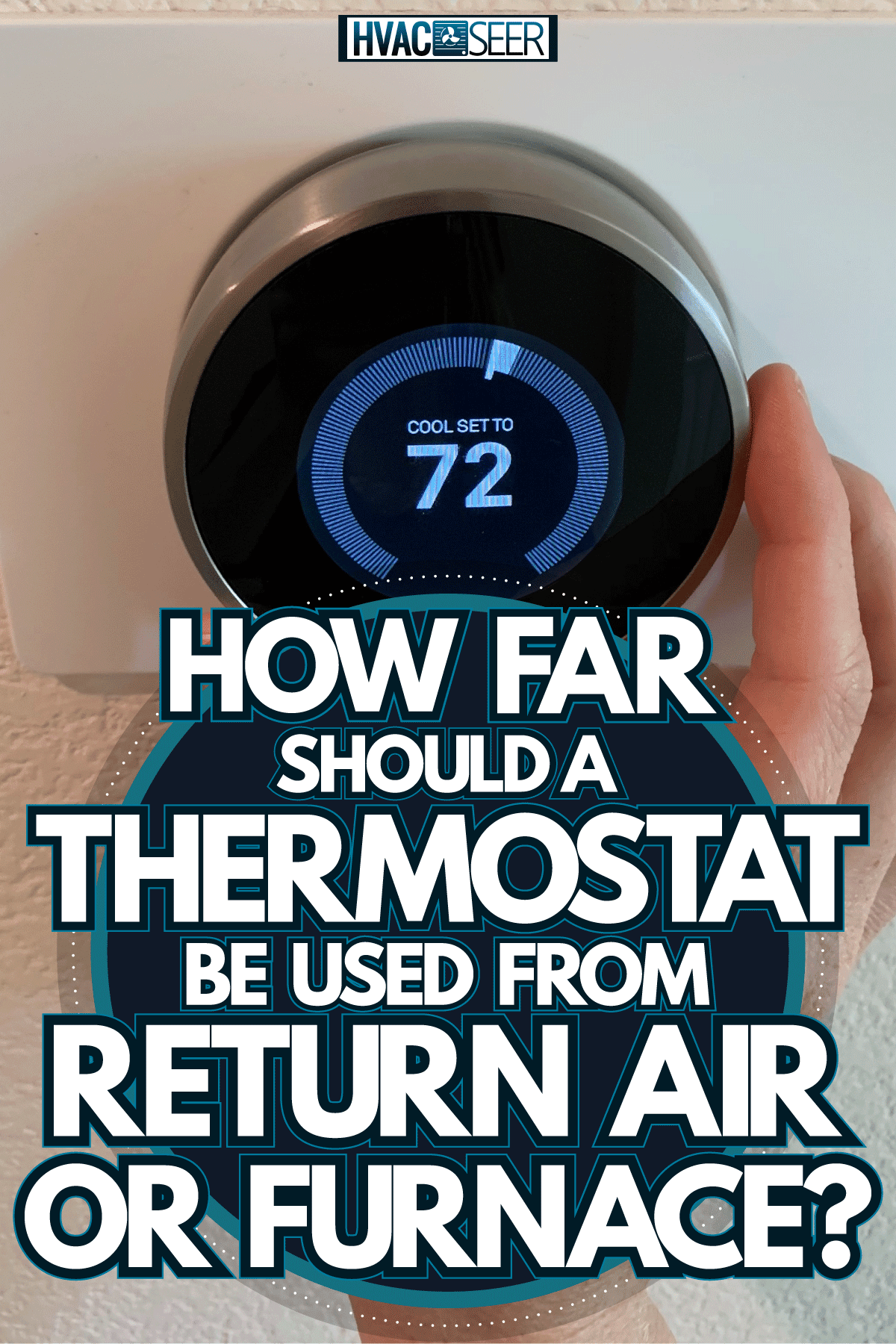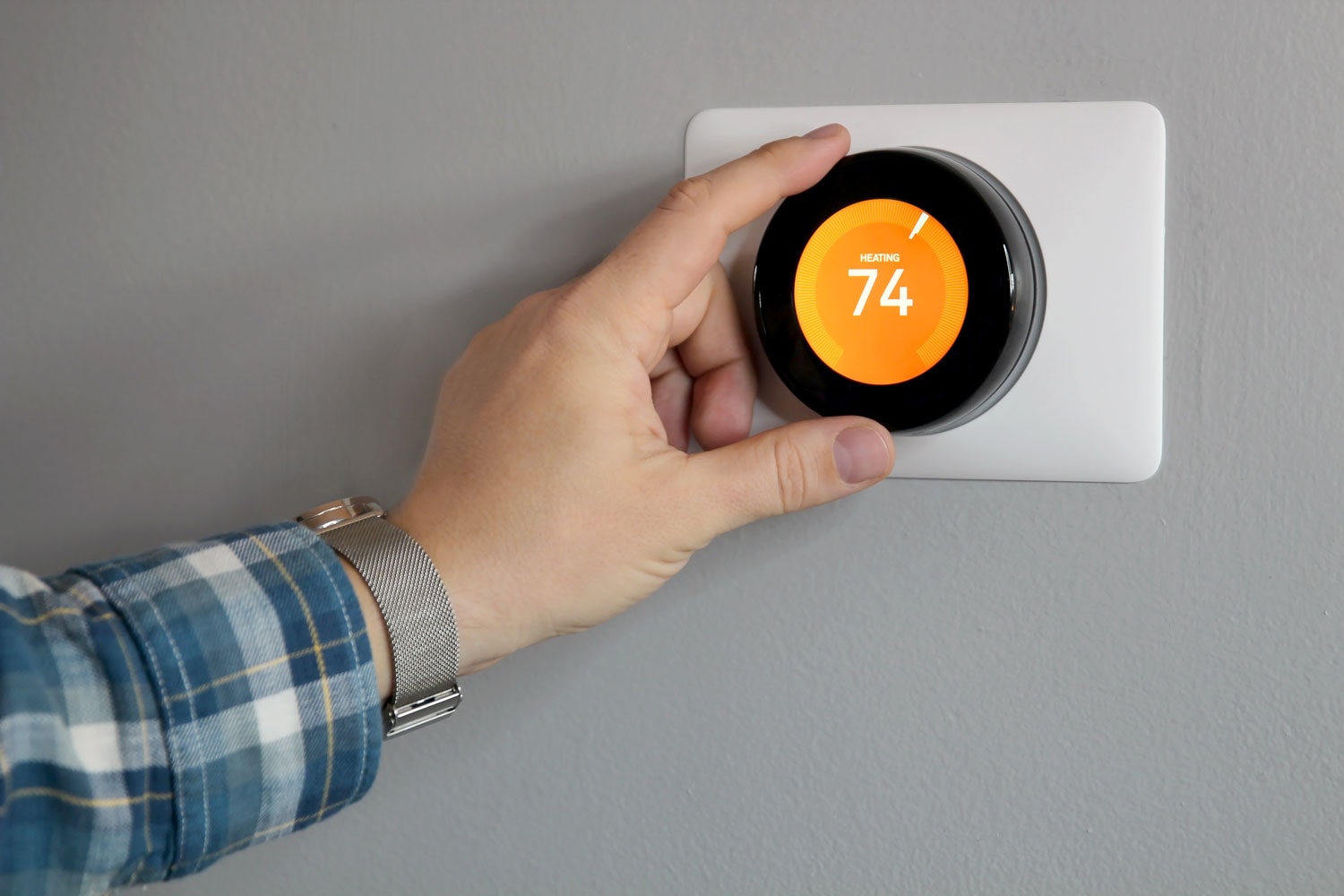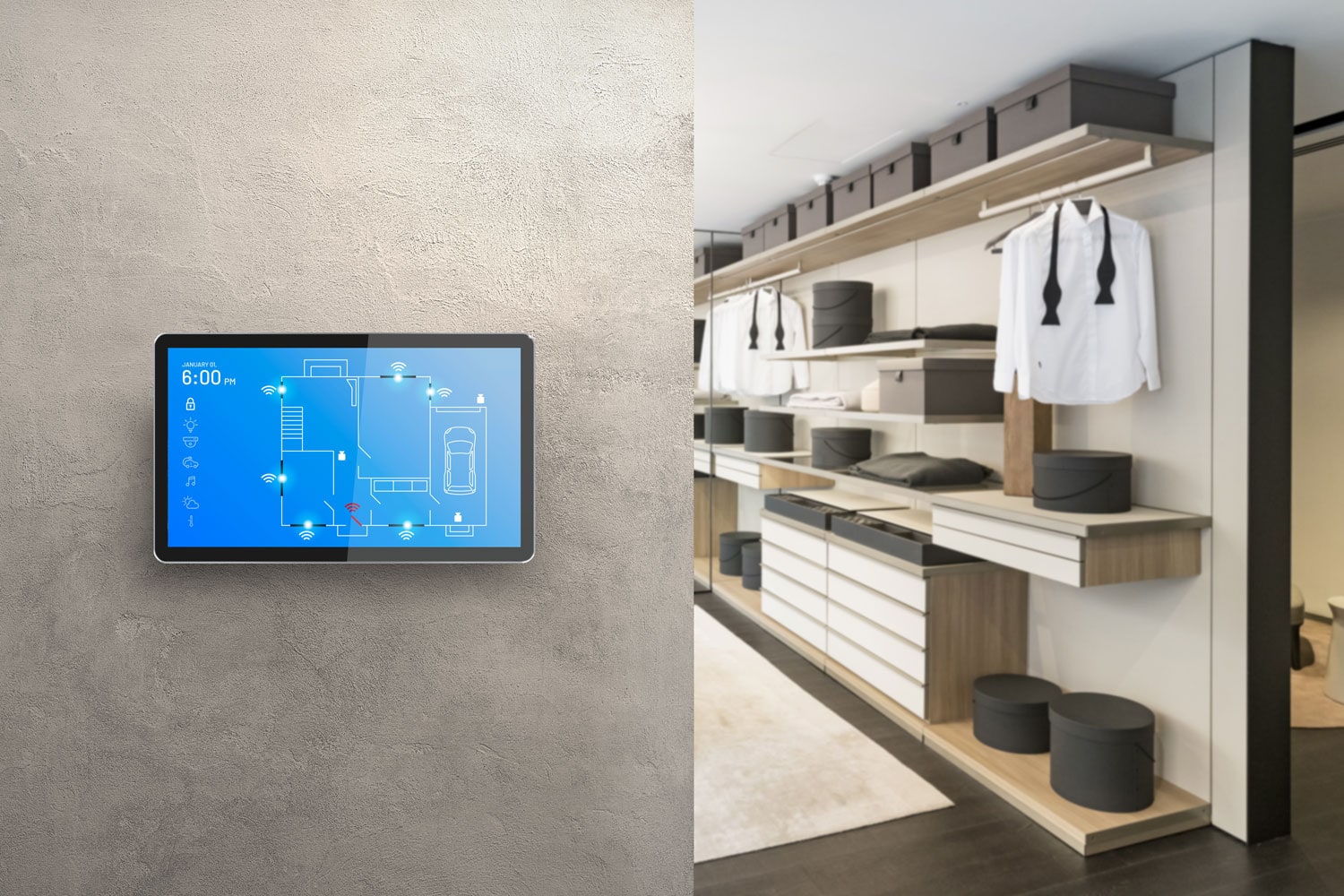The efficiency of your HVAC system starts at the location of your thermostat. An accurately-reading thermostat would know when to start the heating or cooling system, making your home energy-efficient and comfortable. The placement of your thermostat is essential to keeping its records accurate, so you would want it placed in the most neutral part of your home.
Place your thermostat near the air return duct since it is usually at room temperature. You should also install it 52 to 60 inches away from the furnace, which is the ideal height to prevent temperature readings from getting too low or too high.
There are other rules that you need to abide by to keep your thermostat adjusting its temperatures perfectly. If you want to know more about keeping your home safe, efficient, and comfortable, keep reading below!

Where Should You Place Your Thermostat?
The ideal placement for your thermostat is along the central interior wall. This will hide the device away from direct sunlight, vents, and the kitchen which are likely to interrupt its reading.
Ideally, the thermostat should be away from any moving air. Placing it near the return air duct should be fine, though, since it is "regulated" air that has been set to the ideal temperature.

Where to Avoid Placing your Thermostat
If you want to know the perfect place for your thermostat, just remember that hot air rises and cold air sinks.
The perfect place should be somewhere not too high and not too low, away from anything that can throw off its sensors, and not too far away from where people usually gather.
Here are the places you need to avoid placing your thermostat as it can make your entire HVAC system incorrectly function:
Avoid placing near direct sunlight
Thermostats depend on their surroundings and adjust the temperature accordingly. Placing it near a beam of sunlight will make it think that the room is warmer than it actually is and bump up the air conditioner.
This unnecessary action can make your cooling system work harder, which will rack up your utility bills. As you can see, it is a domino effect from there.
Read: How To Move A Thermostat On The Same Wall
Place far away from windows and doors
During the summer, you do not want your air conditioner to suddenly work in a lower setting. Placing your thermostat near the doors and windows will expose it to drafts and make it think that the room is cooler than it is.
This inaccurate reading will make your space feel uncomfortable, nullifying the thermostat's main function.
Do not place on exterior walls
Exterior walls are more exposed to radiant heat in the summer and cold drafts in the winter. It can also be inconsistent because of external influences which can make your indoor climate nonideal.
It should be placed in the interior wall where the temperature matters most.
Avoid air vents
Your thermostat should be placed somewhere with no air moving in. The air from the vents has a different temperature, making the thermostat do ghost readings that have no positive effect on your living space.
Defer from placing it in hallways
Placing the device in your hallways is not a good idea, although many people do it. No one really spends that much time in hallways, so there is no use trying to get it to an ideal temperature.
The air circulation in the hallway is also stifled because of the narrow space, so the reading there will not be accurate.
It should be placed in a room where people frequently stay to ensure that everyone in the house is comfortable.
Avoid sources of heating or cooling
Do not place your thermostat near places that are naturally warm when in use, such as bathrooms and kitchens, or near appliances that run hot, such as lamps, TV sets, or computer set-ups. Avoid placing it near plumbing as well.
These places can throw off your thermostat's reading significantly. The sensors will read the steam or appliance heat and think that the room is warmer than it is; the water running through pipes will make the device think that the room is cooler than it is.
Inaccurate readings begin in the location. Make sure that your thermostat sits in a neutral zone.
Read: How To Move A Thermostat To Another Room
Signs your thermostat is not working properly
Your thermostat should be able to adjust your home's indoor temperature perfectly for your comfort. Here are the signs that your device may not be working properly.
The HVAC system is not responding to adjustments
The most obvious sign that your thermostat needs repairing is if it is no longer responding to temperature changes whether from you or from the surroundings.
The entire HVAC system is nullified if the thermostat cannot kick start them on command.
The HVAC system is short cycling
Your system short cycles if it shuts off before completing a heating or cooling cycle, resulting in an uncomfortable temperature in your home.
This is especially frustrating in the summer when the humidity shoots up and you need a good cooling system to prevent heat strokes and other heat-related illnesses.
During the winter, your space will not be heated properly resulting in more health hazards.
The thermostat has forgotten its programmed settings
Smart thermostats should be able to store your settings and preferences for a long time. If it constantly forgets what to do, you may need to replace your device.
AC or heater won't turn on or off
If you notice that your heating or cooling system has been running nonstop at a consistent temperature, see if you can change it with the thermostat. If nothing happens, there may have been faulty wiring or inaccurate reading.
The thermostat is not matching the room's temperature
A functioning thermostat should be able to accurately read the room's temperature. However, if your room feels hotter or colder than what is indicated, it means it cannot measure the temperature properly.
This might make a domino effect across your entire HVAC system, nullifying any energy-efficient component and making your space uncomfortable.
How to Calibrate your Thermostat's Accuracy

If you notice changes within your HVAC system, checking the thermostat should be your first step. This is usually where the domino effect starts. It is best to start with the simplest possible issue before blaming the HVAC system.
Here is what you can do to recalibrate your thermostat:
Use a thermometer to check your thermostat's accuracy
This method should be done at least once a year, and it is easy enough to be done at any time.
Place an accurate thermometer next to your thermostat. After 15 minutes, check the readings if they match, or if they at least only have a 3˚F difference.
If it is outside the range, you may need to have your thermostat fixed or replaced.
Properly clean your thermostat
You should do occasional maintenance to your thermostat to make sure that it continues to perform at peak condition. Simply remove the device's cover and brush away any accumulated dust or dirt using a cotton cloth or q-tip.
This is also a way to check for any surface corrosion which you can clean off using an electrical contact cleaner.
Adjust the calibration screw

Locate a curled piece of metal inside your device. Turn the screw using a screwdriver until it slowly opens, then tightly close it again after a few seconds.
This method will simply recalibrate the contacts and ensure that there is still a connection.
Check the wires
If nothing else has worked, the wiring may be the problem. In this case, it is best to call a professional to avoid any electrical accidents.
However, if you want to explore it, you can try opening your thermostat to look at the wirings. If you notice anything, do not touch the wirings yourself as you can damage the device or harm yourself.
As with any problems relating to heating or cooling systems, take the wisest route and call a professional.
Should You Leave Your Thermostat On One Temperature?

Although it might be convenient to leave your thermostat at the same temperature, it is not an efficient solution.
Heat is constantly transferred to another area. The higher the temperature difference, the faster heat can transfer.
If your temperature remains constant despite the surrounding temperature, the difference will make heat "leak" outside or inside.
It is best to follow the 8-hour cycle before changing your thermostat. However, if this is inconvenient for you, it may be time to get a programmable thermostat.
Final Thoughts
The placement of the thermostat is an important part of regulating your indoor climate.
When you sense a problem with the temperature, it is best to start investigating the thermostat first, as that is commonly the culprit and has the simplest solution: maybe you only need to adjust its location.
